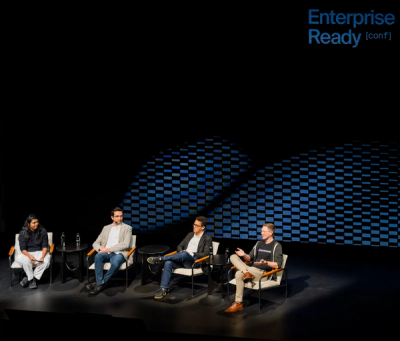
Security News
OWASP 2025 Top 10 Adds Software Supply Chain Failures, Ranked Top Community Concern
OWASP’s 2025 Top 10 introduces Software Supply Chain Failures as a new category, reflecting rising concern over dependency and build system risks.
@govflanders/vl-widget-global-header-types
Advanced tools
This guide is for developers looking to integrate the Flanders Global Header into their websites.
You can integrate the Flanders Global Header into your website using one of two methods: the entry script or the embed script. Each serves a different purpose.
💡 Note: the embed url differs from the previous one. Now it's api/v2 instead of api/v1.
Use the embed script for quick and automatic integration with minimal setup. The embed script is meant to be placed directly inside the DOM where you want the header to appear. It automatically renders the header at the script's location in the HTML.
Example of using the embed script:
<!DOCTYPE html>
<html lang="nl">
<head>
<meta charset="UTF-8" />
<meta name="viewport" content="width=device-width, initial-scale=1.0" />
<title>Global header embed script example</title>
</head>
<body>
<!-- For the UUID, you should use your widget-id -->
<!-- If you want to use the TNI environment, use https://widgets.tni-vlaanderen.be instead -->
<script src="https://widgets.vlaanderen.be/api/v2/widget/9717ae3b-84e8-43b2-a814-e35a2547927f/embed"></script>
<div class="your-website-code">👋 Hello world</div>
</body>
</html>
⚠️ Warning: the window.globalHeaderClient object will only be available after the script is resolved. If it's necessary to have direct access to the window.globalHeaderClient, use the entry script or listen for the widget.global_header.mounted event.
💡 Tip: The widget dispatches a widget.global_header.mounted event when it's ready. You can listen for this event to know when the widget is mounted and ready for interaction:
window.addEventListener('widget.global_header.mounted', async () => {
// Widget is now mounted and ready
const config = await window.globalHeaderClient.getConfig();
console.log('Global Header Widget mounted', config);
});
Use the entry script if you need more control over when, where and how the header is mounted. The entry script should be placed in the <head> section of your HTML, preferably at the top. This is essential because the window.globalHeaderClient object is only available after this script has loaded. With the entry script, the header does not render automatically, so you'll need to call the mount method to display it.
Example of using the entry script:
<!DOCTYPE html>
<html lang="nl">
<head>
<!-- For the UUID, you should use your widget-id -->
<!-- If you want to use the TNI environment, use https://widgets.tni-vlaanderen.be instead -->
<script src="https://widgets.vlaanderen.be/api/v2/widget/9717ae3b-84e8-43b2-a814-e35a2547927f/entry"></script>
<meta charset="UTF-8" />
<meta name="viewport" content="width=device-width, initial-scale=1.0" />
<title>Global header entry script example</title>
</head>
<body>
<div class="your-website-code">👋 Hello world</div>
<script>
window.globalHeaderClient.mount(); // Mount the header manually after the script has loaded
</script>
</body>
</html>
<head>, requires manual mounting with window.globalHeaderClient.mount() method.window.globalHeaderClient APIThe widget is available on the global window object as window.globalHeaderClient. You can import the types from global-header-types to use them in your project, if you're using typescript (more info here).
Example of using the window.globalHeaderClient object in javascript:
const client = window.globalHeaderClient;
const contactLink = {
label: 'Contact',
href: '/contact',
};
const feedbackLink = {
label: 'Feedback',
href: 'https://example.com/feedback',
isExternal: true,
target: '_blank',
};
client.accessMenu.setMainLinks([
contactLink,
feedbackLink,
]);
Checkout the GlobalHeaderClient here to see all the available methods.
If you’re currently using version 4 of the Global Header Widget, please follow this guide to upgrade to version 5. This guide highlights the key changes and steps you need to take to ensure a smooth transition.
No more client library or polyfill scripts: In version 5, you no longer need to include any additional client library or polyfill script links in your HTML. Access to the window.globalHeaderClient object is automatically provided when you include either the entry script or the embed script (after the script is loaded).
Action Required:
<script> tags that reference client libraries or polyfill libraries for the widget.Script-based integration only: Version 5 removes the need for installable packages via npm or yarn. All functionalities are now accessible by including script tags directly in your HTML’s <head> or <body> section.
Action Required:
Version Update in Embed Links: If you’re using the embed script method to include the widget, you need to update the version number in your script’s src URL from 'v1' to 'v2'. Example here.
API Changes: The window.globalHeaderClient API has been updated in version 5. Methods, their signatures, and usage patterns may have changed. Refer to the GlobalHeaderClient section for detailed information on the new methods and their parameters.
Action Required:
window.globalHeaderClient.Example:
// Using widgets V4
- vl.widget.client.capture(
- // Verplichte capture functie.
- function(widget) {
- if (widget.getPluginTypeId() === 'global_header') {
- widget.getExtension('contact', 'unsafe').resetServicePoints();
- }
- },
- );
// Using widgets V5
+ globalHeaderClient.contact.resetServicePoints();
In version 5, the header no longer maintains a separate session state. This change entails:
sessionStorageThis streamlining simplifies the session management process and reduces session-related errors.
In version 5 of the Global Header Widget, there are significant updates to the profile management functionality:
configure method has been replaced by the setProfile method in the accessMenu.loginRedirectUrl parameter is now deprecated.idpData object has been introduced, allowing you to pass additional user information, such as the user's name, if they are signed in.Example of Profile Method Usage:
// Using widgets V4
- vl.widget.client.capture(
- // Required capture function.
- function(widget) {
- if (widget.getPluginTypeId() === 'global_header') {
- widget.getExtension('citizen_profile.session', 'unsafe').configure({ active: true });
- }
- },
- );
// Using widgets V5
+ globalHeaderClient.accessMenu.setProfile({ active: true });
Key Points:
configure method with setProfile in your codebase.loginRedirectUrl.idpData object to enhance user profile management by including relevant user details.window.globalHeaderClientUnified Access via Scripts: In version 5, you can access the window.globalHeaderClient object regardless of whether you use the entry script or the embed script.
Action Required:
window.globalHeaderClient.After integrating version 5 of the widget into your website, it’s important to thoroughly review its appearance and functionality to ensure everything works as expected. Some styling adjustments might be necessary due to changes in the widget’s design or your site’s CSS.
Action Required:
The Global Header Widget v5 now supports multiple languages. The widget automatically adapts to the language of the document. It observes the lang attribute on the <html> tag, so it's the implementer's responsibility to handle any language switching functionality. If the lang attribute changes, the widget will update to display the correct language.
Supported languages:
To change the document language, you can use the following JavaScript snippet:
window.document.documentElement.lang = 'nl'; // 'nl', 'en', 'de' or 'fr'
This will switch the document's language to Dutch, and the widget will automatically reflect the change.
Notes:
NL or nl-BE)The Global Header Widget supports the two most recent versions of all major browsers:
Please ensure your users are on the latest versions of these browsers to guarantee full functionality of the widget.
The @govflanders/vl-widget-global-header-types package provides TypeScript types and interfaces for interacting with the Global Header Widget. This widget is embedded in customer web pages and exposes a client object (window.globalHeaderClient) that allows for dynamic configuration and interaction with the global header.
By using the types defined in this package, developers can ensure type-safe interactions with the widget while improving their development experience (DX) by utilizing autocompletion and built-in documentation.
To install the global-header-types package, use the following command:
npm install -D @govflanders/vl-widget-global-header-types
or
yarn add -D @govflanders/vl-widget-global-header-types
Note: It’s recommended to use the caret (^) symbol in your package.json to stay updated with the latest minor and patch versions.
Example of using the types to interact with the widget:
import { GlobalHeaderClient, MainLink } from '@govflanders/vl-widget-global-header-types';
const client: GlobalHeaderClient = window.globalHeaderClient;
const contactLink: MainLink = {
label: 'Contact',
href: '/contact',
};
const feedbackLink: MainLink = {
label: 'Feedback',
href: 'https://example.com/feedback',
isExternal: true,
target: '_blank',
};
client.accessMenu.setMainLinks([
contactLink,
feedbackLink,
]);
To ensure the secure integration of the Global Header Widget, you need to configure your Content Security Policy (CSP) with the following directives:
The minimum required CSP directives for using the global-header in a production environment are:
| Directive | Value |
|---|---|
connect-src | https://widgets.vlaanderen.be |
connect-src | wss://chat.contactcenter.vlaanderen.be |
connect-src | https://chat.contactcenter.vlaanderen.be |
connect-src | https://contactapi.vlaanderen.be |
font-src | https://ui.vlaanderen.be |
font-src | https://assets.vlaanderen.be |
font-src | https://widgets.vlaanderen.be |
img-src | data: |
img-src | https://assets.vlaanderen.be |
img-src | https://widgets.vlaanderen.be |
script-src | https://widgets.vlaanderen.be |
The minimum required CSP directives for using the global-header in a TNI environment are:
| Directive | Value |
|---|---|
connect-src | https://widgets.tni-vlaanderen.be |
connect-src | wss://tni.contactapi.uat-vlaanderen.be |
connect-src | https://chat.contactcenter.dev-vlaanderen.be |
connect-src | https://tni.contactapi.uat-vlaanderen.be |
font-src | https://ui.vlaanderen.be |
font-src | https://assets.vlaanderen.be |
font-src | https://widgets.tni-vlaanderen.be |
img-src | data: |
img-src | https://assets.vlaanderen.be |
img-src | https://widgets.tni-vlaanderen.be |
script-src | https://widgets.tni-vlaanderen.be |
If you're using the screensharing extension in the contact menu, include the following additional directives:
| Directive | Value (Production & TNI) |
|---|---|
connect-src | cobrowse.io |
connect-src | *.cobrowse.io |
connect-src | wss://*.cobrowse.io |
For more detailed information about the cobrowse CSP settings, please refer to the Cobrowse SDK Installation Guide.
Ensure that your CSP settings are correctly configured to avoid any issues with the widget's functionality and security. If you have any questions or need further assistance, please refer to the Contact Information section.
If you need assistance or have any questions regarding the Global Header Widget, feel free to reach out to us:
Our team is here to help with any issues or inquiries you might have.
FAQs
TypeScript definitions for GlobalHeaderClient
The npm package @govflanders/vl-widget-global-header-types receives a total of 537 weekly downloads. As such, @govflanders/vl-widget-global-header-types popularity was classified as not popular.
We found that @govflanders/vl-widget-global-header-types demonstrated a healthy version release cadence and project activity because the last version was released less than a year ago. It has 20 open source maintainers collaborating on the project.
Did you know?

Socket for GitHub automatically highlights issues in each pull request and monitors the health of all your open source dependencies. Discover the contents of your packages and block harmful activity before you install or update your dependencies.

Security News
OWASP’s 2025 Top 10 introduces Software Supply Chain Failures as a new category, reflecting rising concern over dependency and build system risks.

Research
/Security News
Socket researchers discovered nine malicious NuGet packages that use time-delayed payloads to crash applications and corrupt industrial control systems.

Security News
Socket CTO Ahmad Nassri discusses why supply chain attacks now target developer machines and what AI means for the future of enterprise security.